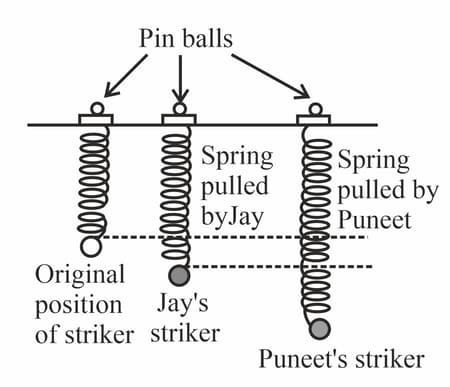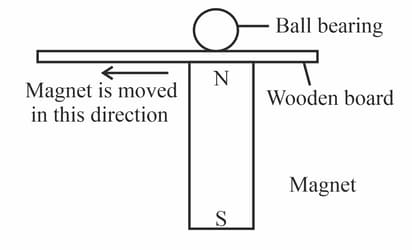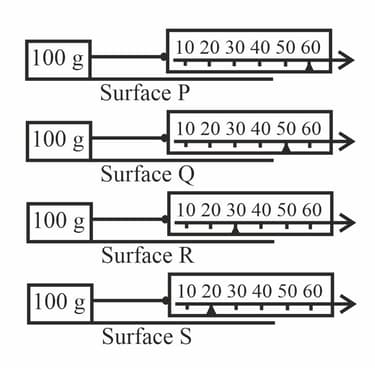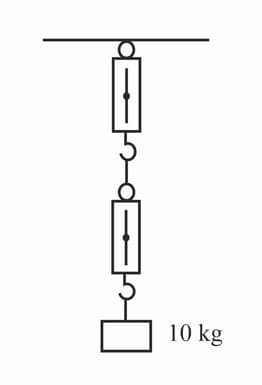Anil Ahlawat Solutions for Chapter: Force and Pressure, Exercise 1: EXERCISES
Anil Ahlawat Science Solutions for Exercise - Anil Ahlawat Solutions for Chapter: Force and Pressure, Exercise 1: EXERCISES
Attempt the practice questions on Chapter 10: Force and Pressure, Exercise 1: EXERCISES with hints and solutions to strengthen your understanding. NSO Science Olympiad Workbook Grade 8 solutions are prepared by Experienced Embibe Experts.
Questions from Anil Ahlawat Solutions for Chapter: Force and Pressure, Exercise 1: EXERCISES with Hints & Solutions
Jay and Puneet go to the amusement park to play the pin ball game. The figure shows the extent to which each of them pulls the striker. Which one of the following statements is correct?

Does a falling body accelerate? Why?
A boy set up an experiment as shown in the diagram. As he slides the magnet across the wooden board, the ball bearing followed the magnet's movement and direction. What does the experiment show?

(i) Magnetic force can be seen due to friction between ball bearing and wooden board.
(ii) Friction and gravity help to move the ball bearing.
(iii) The ball bearing is made of a magnetic substance.
(iv) Magnetic force can pass through the wooden board.
A sharp knife enable us to cut through things more easily as compare to a blunt knife because
The given figures show the forces required to move a object over different surfaces. The friction is greatest at

Which of the following objects exerts the maximum pressure on the floor? (All objects have same mass).
A block of mass is suspended through two light spring balances as shown in figure. Then:
(Neglect the mass of spring balance)

Three identical vessels and contain same quantity of liquid. In each vessel, blocks with different densities but same masses are placed as shown in figure. If and are the total forces acting on the base of vessels and respectively, then

